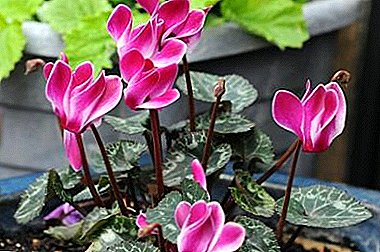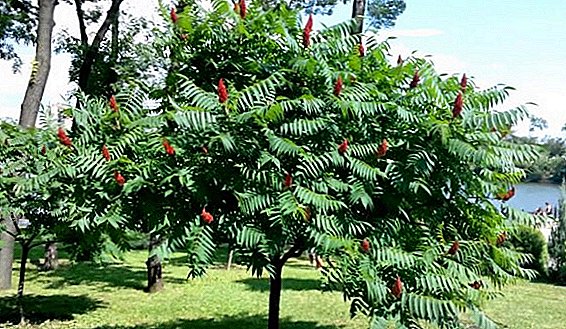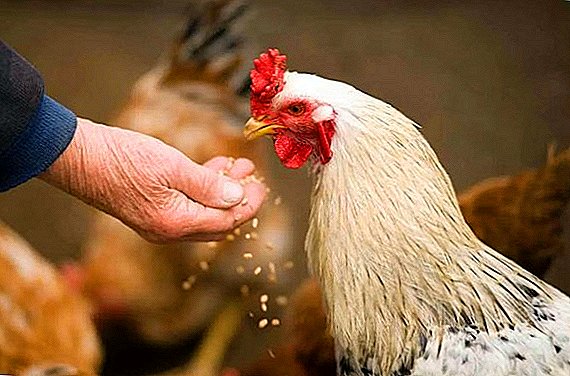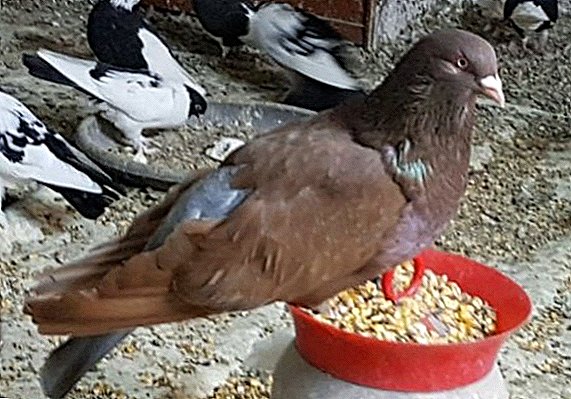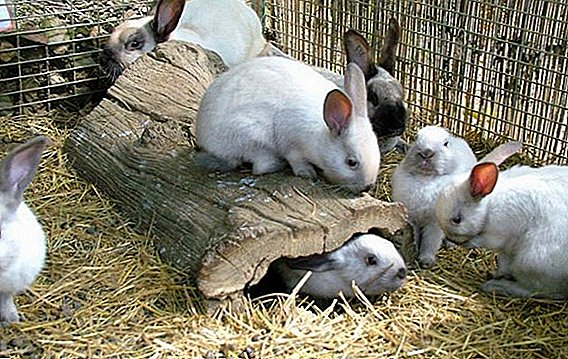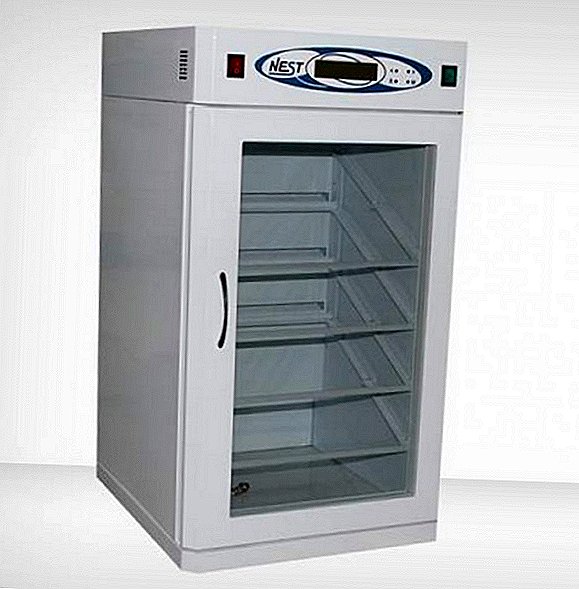 Almost everyone involved in poultry, faced with the question of its breeding. After all, if we are talking about hundreds of eggs, it will be difficult for chicks to cope with such a quantity. To facilitate this task and called modern high-precision incubators. One of the most popular is the Nest-200, which allows you to breed young species of several species of birds.
Almost everyone involved in poultry, faced with the question of its breeding. After all, if we are talking about hundreds of eggs, it will be difficult for chicks to cope with such a quantity. To facilitate this task and called modern high-precision incubators. One of the most popular is the Nest-200, which allows you to breed young species of several species of birds.
Description
Nest-200 is a modern, automated incubation and hatcher, which allows to get the best results in breeding chicks of various breeds. The incubator is characterized by a harmonious design, high-quality materials and precise electronics.
Its body is made of sheet metal, element-painted with powder paint and insulated with foam plastic. This helps prevent the development of corrosion of the case and maintain the internal microclimate of the device.
The incubator manufacturer is the Ukrainian company Nest, working with high-quality domestic materials and components of foreign production.
Read the description and the nuances of using such household incubators such as "Sovatutto 24", "IFH 1000", "Stimulus IP-16", "Remil 550TsD", "Covatutto 108", "Titan", "Stimul-1000", "Blitz "," Cinderella "," Perfect hen "," Laying ".
Due to the reliability and durability of its products, the company has proven itself not only in the Ukrainian, but also in the Russian market. The warranty period for the Nest-200 is 2 years. The average output of chicks is 80-98%. 
Specifications
The device has the following characteristics:
- temperature range - 30 ... 40 ° C;
- humidity range - 30-90%;
- turn trays - 45 degrees;
- temperature error - 0.06 ° C;
- humidity error - 5%;
- the interval between the turns of the trays is 1-250 min .;
- number of fans - 2 pcs .;
- number of trays - 4 pcs .;
- air heater power - 400 W;
- water heater power - 500 W;
- average power consumption - 0.25 kW / hour;
- emergency heating system - in stock;
- maximum battery power - 120 W;
- mains supply voltage - 220 V;
- voltage frequency - 50 Hz;
- length 480 mm;
- width - 440 mm;
- height - 783 mm;
- weight - 40 kg.
Production characteristics
The incubator has a universal purpose, that is, it is possible to breed young species of different species of birds. Since the eggs are of different sizes, the capacity of the apparatus will be:
- for chicken eggs - up to 220 pcs .;
- for goose eggs - up to 70 pcs .;
- for duck eggs - up to 150 pcs .;
- for turkey eggs - up to 150 pcs .;
- for quail eggs - up to 660 pcs.
To accommodate eggs, the device is equipped with four metal trays in the form of grids.
Important! The incubator should be in a warm, but not hot room. In addition, it should not be located close to other electrical devices - it is necessary to maintain a distance of at least 50 cm.

Incubator Functionality
Nest-200 works on the basis of an industrial Microchip processor (USA) with components for a Philips production control board (the Netherlands).
Device control provides automatic adjustment and control of such parameters:
- ambient temperature and humidity;
- frequency of rotation of the trays;
- alarm range;
- sensor calibration;
- adjust the intensity of air;
- double protection against overheating eggs.
We recommend that you familiarize yourself with the characteristics of the best modern egg incubators.
The accuracy of the display data on the display provide sensors Honeywell (USA). They are high-precision protected sensors consisting of a flat capacitor with an additional polymer layer to protect against dust and lint. They are distinguished by low power consumption, reliability, quick response and stable operation.  For high-quality air exchange, fans from Sunon (Taiwan) are installed, which are notable for their long working life and low noise level with full performance.
For high-quality air exchange, fans from Sunon (Taiwan) are installed, which are notable for their long working life and low noise level with full performance.
To maintain the required level of temperature of the medium, an electric air heater is installed in the device, made of stainless metal and characterized by reliability and durability.
Read more about how to choose a thermostat for an incubator, as well as how to make it with your own hands.
Rotation of trays in the apparatus is carried out by a Powertech brand drive (Taiwan) with a low noise level and a coating for protection against corrosion, moisture and dust.
The camera is equipped with LED lighting, which allows both to observe the process of breeding chicks and save on electricity consumption. LED lamps are durable, low body heat and protection from voltage surges.  When the power is turned off for the Nest-200, a standard car battery with a capacity of at least 60 amps (preferably 70-72 amps) is used. Taking into account the maximum load on average, the battery can continuously work up to nine hours. At the end of the hatching, it should be removed, recharged and connected only during the incubation period.
When the power is turned off for the Nest-200, a standard car battery with a capacity of at least 60 amps (preferably 70-72 amps) is used. Taking into account the maximum load on average, the battery can continuously work up to nine hours. At the end of the hatching, it should be removed, recharged and connected only during the incubation period.
We advise you to read about how to make an incubator for eggs with your own hands.
Advantages and disadvantages
Pros Nest-200:
- harmonious design;
- durable housing materials;
- ease of operation;
- low power consumption;
- microprocessor control unit;
- two-stage overheating protection;
- air exchange regulation;
- sound alarm about deviations of parameters;
- minimum noise level when turning trays;
- excellent quality and reliability of all components of the device;
- display of information about the parameters of work on the display;
- automatic transfer to battery operation in case of power failure.

Cons Nest-200:
- quite high cost;
- problems with the replacement of some components;
- an increase in the error in the hygrometer readings after 2-3 years of work;
- high water consumption - about four liters per day;
- condensate dripping on the door and under the incubator with strong evaporation of water.
Did you know? The ancestors of all modern domestic chickens descended from wild chickens living in Asia. But about the domestication of these birds, the opinions of scientists diverge. Some claim that this event happened about 2,000 years ago in India, while others believe that people began to keep chickens on their farms 3,400 years ago in Asia.
Instructions for the use of equipment
For incubation, only fresh, healthy, intact and fertilized eggs should be selected. 
Preparing the incubator for work
The process of preparing for work looks like this:
- Wash trays and internal walls of the apparatus with warm soapy water and disinfect with an antiseptic.
- Check the operation of all incubator systems.
- Pour water into a special container.
- Set the desired temperature, humidity and frequency of rotation of the trays.
- Heat the incubator.
Important! Before laying eggs in the incubator, it is necessary to check its battery operation, especially if there are frequent interruptions in electricity in the area.
Egg laying
- Pull trays out of the incubator.
- Lay eggs in them.
- Place trays with eggs in the apparatus.
It will probably be useful for you to learn how to sanitize and equip eggs before laying, as well as when and how to lay chicken eggs in an incubator.

Incubation
- Periodically check the state of incubation for indications on the display.
- To maintain the necessary humidity, periodically add water to the tank (an audible warning works).
It will be useful for you to familiarize yourself with the peculiarities of breeding chickens, ducklings, turkeys, poults, goslings, guinea fowls, quails in an incubator.
Hatching chicks
- A few days before the end of the incubation period (depending on the type of bird), turn off the tray turning function.
- As the chicks hatch, remove them from the incubator and plant them in a prepared place.
Device price
At present, the cost of an incubator Nest-200 when purchased directly from the manufacturer is 12,100 UAH (about $ 460). Russian online stores offer this model for an average of 48-52 thousand rubles. 
findings
The overwhelming majority of reviews about the Nest-200 device are extremely positive. As for the shortcomings of this model, then, according to some farmers, the capacitive humidity sensor used in incubators of this brand for the first 2-3 years really has an error of no more than 3%.
However, later, over time, it can reach up to 10% and even 20%. This problem is solved by periodically checking the humidity with a separate psychrometer.
Did you know? Birds also know how to do incubators. The males of the wild ocelli that live in Australia dig up a deep hole for this and fill it with a mixture of sand and vegetation. The female lays up to 30 eggs there, and the male measures its temperature with its beak every day. If it is higher than necessary, it removes part of the covering material, and if it is lower, then, on the contrary, it adds.
 In general, users have noted high reliability, efficiency, reliability and a high percentage of hatching in the Nest-200 incubator. Its proper use and availability of a market for young stock will make it possible to recoup the incubator in just a few months.
In general, users have noted high reliability, efficiency, reliability and a high percentage of hatching in the Nest-200 incubator. Its proper use and availability of a market for young stock will make it possible to recoup the incubator in just a few months.

